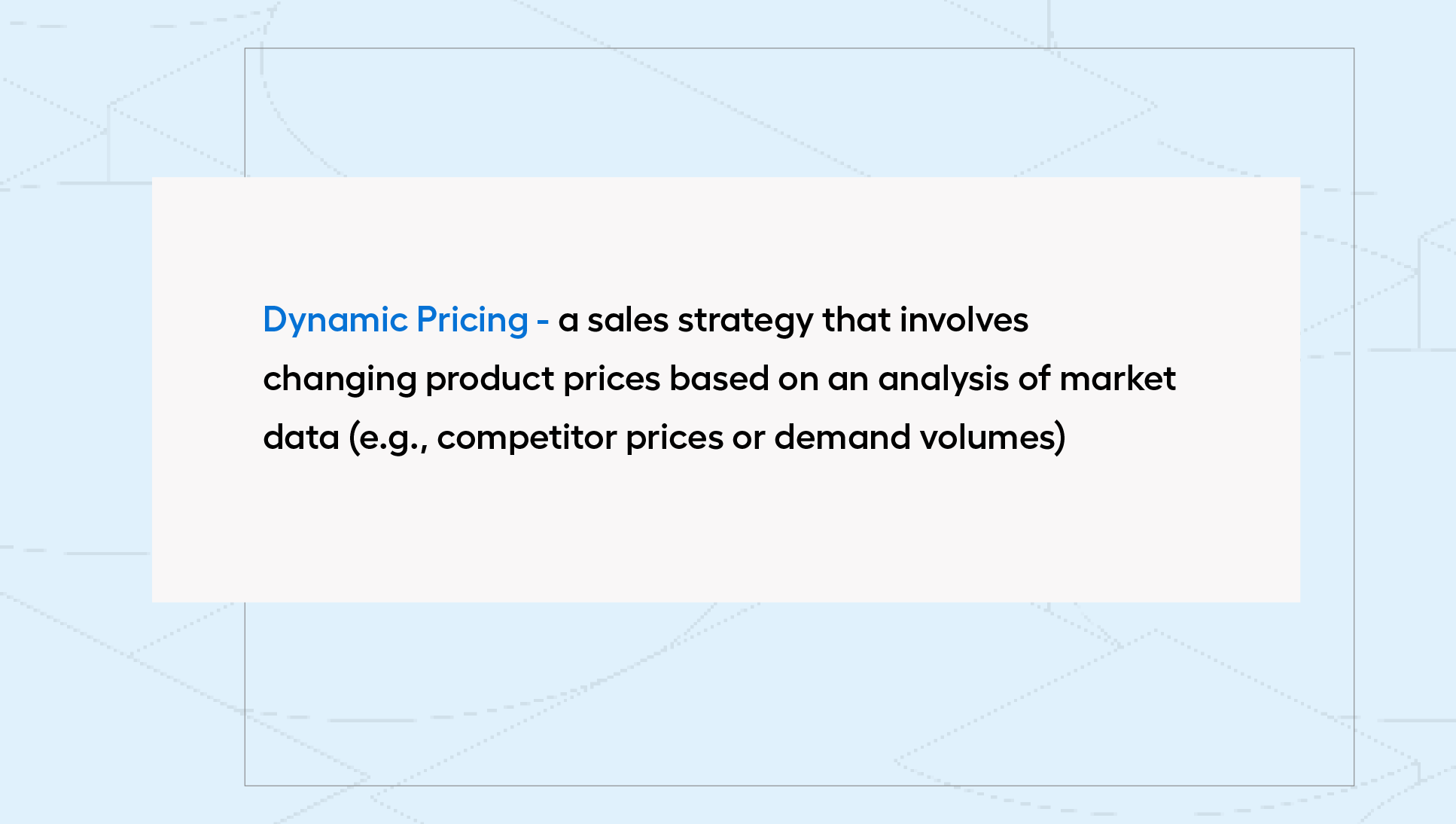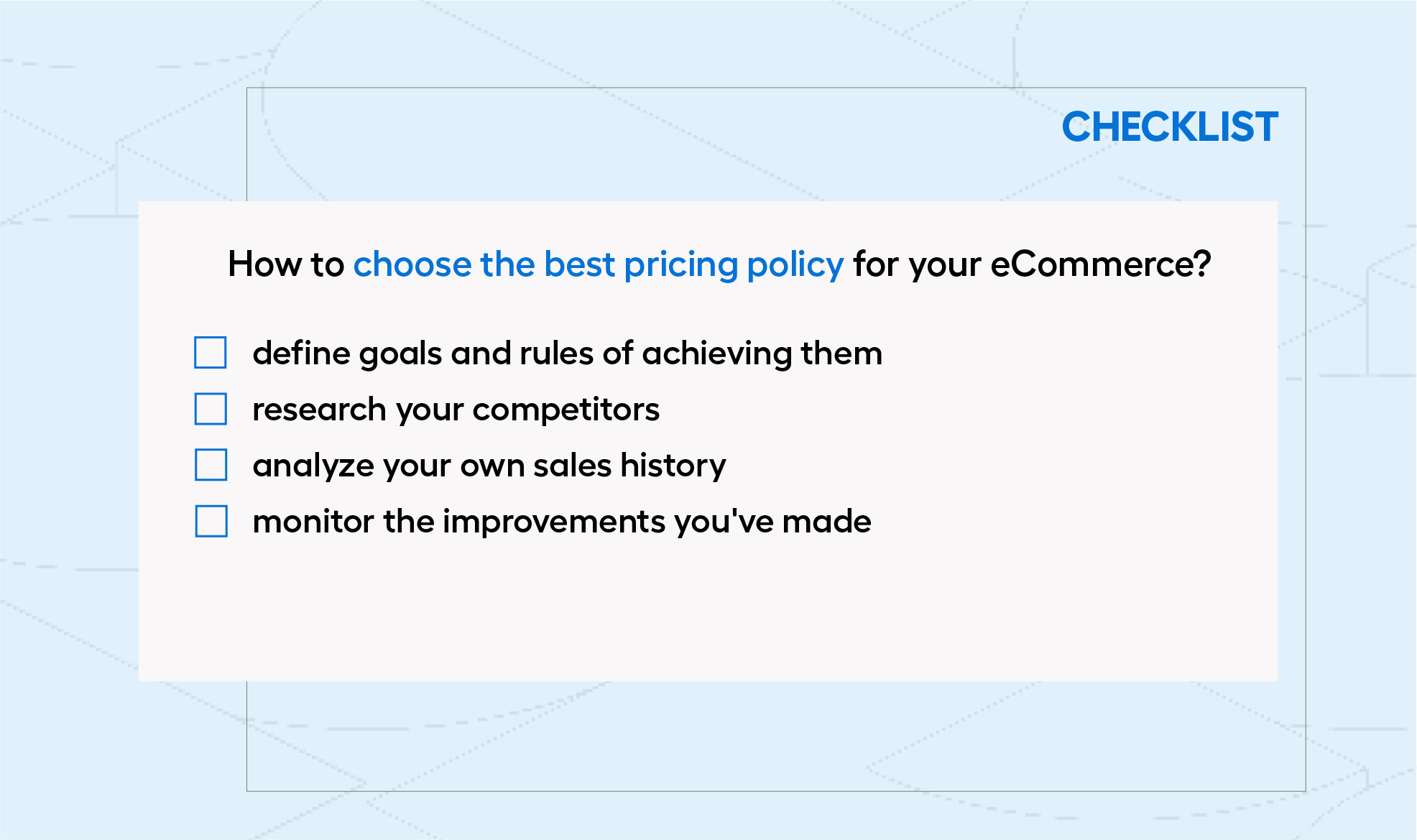In the 1970s, airline owners realised that they could increase their profits by adjusting ticket prices based on various factors such as seat availability, seasonality, and location. How does this story relate to eCommerce? This innovative strategy was the first attempt at introducing dynamic pricing, an approach now increasingly used in the online sales industry. Just as airlines adapted ticket prices to changing conditions, online stores now use advanced algorithms and technologies to monitor market data, competitive prices, and customer preferences. This enables them to dynamically adjust their product prices, responding to current demand changes, market trends, or competitive strategies. Are you curious about how this solution works in practice? Read the article to find out how dynamic pricing can benefit your eCommerce!
Dynamic Pricing in eCommerce - what is it?
Dynamic pricing is a pricing strategy that involves dynamically adjusting product prices based on ongoing information such as competition analysis, sales data (including current demand and availability), and consumer preferences. Why is this strategy popular in online commerce? For online shoppers, price is a key factor influencing the final purchase decision. According to the "E-commerce w Polsce" study, price is the most important factor motivating nearly 70% of Poles to shop online. Often, a difference of a few zlotys in the final calculation (after including delivery prices, insurance, or other additional costs) can influence the completion of an order. This is why dynamic pricing has become a key tool for eCommerce industry representatives. How does it work?

To optimise prices in online stores, advanced algorithms and artificial intelligence tools are increasingly used. They allow continuous monitoring of various data, such as market indicators (e.g., inflation percentage), historical data, or customer behaviour, and then adjust prices according to previously established rules. This approach not only ensures competitive pricing but also allows for effective response to changing market conditions. In short - introducing dynamic price optimization enables stores to better adapt their offer to customer expectations, leading to increased conversion.
What influences the pricing in online stores?
The continuous development of the eCommerce industry, economic factors, changing fashion, and seasonality are just a few factors that influence price formation. Including them in your pricing policy is essential to effectively adapt to dynamic market realities.
One of the key elements influencing online store pricing is undoubtedly competition. Analysing prices offered by other platforms helps maintain competitiveness - it's important to carefully track competitors' pricing strategies (not only base prices but also discount actions or discount codes) to respond to their actions. This approach enables effective adaptation to the changing market environment, gaining customer trust and satisfaction. But that's not all to consider. Factors influencing online store pricing also include:
- consumer preferences,
- specifics of the offer,
- order processing costs,
- trends and fashion,
- currency exchange rates (in the case of international sales, or cross-border commerce).
Effective eCommerce Pricing Policy - where to start?
To effectively set prices in your online store and benefit from a dynamic pricing model, it's crucial to adopt an appropriate pricing strategy - and this requires proper preparation. First, define the goals you want to achieve. Consider whether the current priority is to increase market presence, build brand recognition and reputation, or maximise profits.
However, the price-setting process doesn't end there. The next step is to analyse competitors' actions and sales policies. It's also valuable to thoroughly analyse the traffic history of your online store. All of that will help in developing a comprehensive strategy adapted to current conditions.

In setting prices in your store, you can use various pricing models, including:
- imitation strategy - setting prices based on competitor price analysis.
- high-price strategy - choosing higher than average market prices to strengthen brand reputation.
- low-price strategy - suitable for mass sales models.
- peak-pricing strategy - adjusting prices to current customer requirements.
In each case, however, it is important that the pricing strategy is flexible and adapted to the dynamic market environment. Regular assessment of the effectiveness of adopted strategies and monitoring changes in the business environment allows maintaining online store competitiveness and achieving set goals. Implementing a dynamic pricing model requires not only planning but also continuous adaptation to changing market conditions.
Taking it further - automatic price management in online stores
Manual price monitoring and adjustment to changing conditions can be not only time-consuming but may also generate the risk of errors while doing the mechanized tasks. Moreover, with the growing amount of data to process, manual tracking of prices and products becomes practically impossible. Bearing this in mind, it's worth reaching for technical support and automating this process. How?
Depending on the size or architecture of your eCommerce, you can choose from a wide catalogue of tools. Among them, it's worth mentioning the ERP (Enterprise Resource Planning) system. Integrating your e-store with this system allows for continuous response to market changes, eliminating human errors and increasing the precision of actions. Whenever a product's price needs to change (e.g., due to increased purchase costs from suppliers), the system will react immediately. Support for determining prices can also be provided by the PIM (Product Information Management) system, which allows for storing product information (including pricing). Additionally, specific sales platforms (e.g., Magento Adobe Commerce) are often equipped with internal tools for managing margins. In any case, by matching the tool to the needs of your e-store, you can be sure that the prices in your offer will always remain adequate.
Why opt for dynamic pricing lists in eCommerce?
Responding to market changes is necessary to maintain a satisfactory position in the industry. This is what enables the maintenance of price flexibility. Quick response to changes in demand, consumer trends, or competitors' strategies is one of the biggest advantages of using dynamic pricing. What other benefits does this strategy bring?
Dynamic pricing lists contribute to:
- maximising sales,
- increasing competitiveness,
- improving customer experiences (by offering more personalised offers, tailored to their expectations and preferences),
- optimising time and work resources.
As a result, the decision to implement dynamic pricing not only allows adaptation to market changes but also serves as an effective tool for optimising sales, building competitiveness, and creating positive customer relationships.
Dynamic pricing in your eCommerce - yes or no?
Will the dynamic pricing model work in every online store? Although there are many potential benefits of implementing this solution, it is not a strategy that will be applicable in every industry. In the B2C platform segment, excessive price differentiation may meet with customer disapproval, who may notice changing prices (which can lead to confusion or loss of trust). Therefore, in this segment, it's important to carefully use this model - data analysis is crucial, but the human factor should also be considered in the pricing strategy.
However, in the B2B sales model, the dynamic pricing model might be one of the expectations of clients and can significantly improve their purchasing experiences. Differentiating prices between individual partners allows adapting the offer to individual needs and the nature of business relationships. For instance, offering attractive prices to clients placing larger or cyclical orders can positively affect their relationships and sense of loyalty.
Dynamic pricing management can also be effective in offering services within the eCommerce platform. Examples such as modifying hotel rental prices depending on the popularity of a place (as well as seasonality, local events at a given time, or even weather forecasts) or adjusting ticket prices for events in subsequent sales rounds illustrate the potential of this strategy. In this case, ticket prices are often lower at the beginning to encourage quick purchases. As they are sold out, the system can gradually increase prices, reflecting growing interest in the event. This price flexibility thus allows for maximising revenue.
| B2C | B2B |
|---|---|
| Pricing flexibility allows to increase sales. However, it requires careful analysis of the data with consideration of human factors. Excessive price differentiation can lead to confusion or loss of customer trust. |
Pricing flexibility allows offers to be tailored to individual needs and business relationships. Typically a positive impact on the loyalty of business partners through customised offers. |
In every case, the decision to implement a dynamic pricing model should consider the business context, industry specifics, and customer preferences. Properly adapted, a dynamic pricing model can contribute to increased competitiveness and efficiency, while its improper application may generate negative consequences.
What pricing strategy will you choose for your online store?
The dynamic environment of online trade requires the use of solutions that can keep up with market changes. One such solution is dynamic pricing. Thoughtful implementation of dynamic prices can open doors to increased sales, improved competitiveness, and building customer loyalty.
However, before you make a decision, consider the business context, the specifics of your industry, and the preferences of your customers. Adapting dynamic prices to the individual needs and expectations of customers is key to effectively using this strategy. Are you interested in implementing such a solution but don't know where to start? Write to us - we'll be happy to help!



